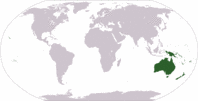Neoveitchia brunnea
| Neoveitchia (neh-oh-vih-KEE-ah) brunnea (broon-NEH-ah) | |||||||
|---|---|---|---|---|---|---|---|
 Photo-Rare Palm Seeds.com | |||||||
| Scientific Classification | |||||||
| |||||||
| Synonyms | |||||||
|
| |||||||
| Native Continent | |||||||
|
| |||||||
| Morphology | |||||||
| |||||||
| Culture | |||||||
|
| |||||||
| Survivability index | |||||||
|
| |||||||
| Common names | |||||||
|
| |||||||
Contents
Habitat and Distribution
Vanuatu. Neoveitchia brunnea is native to the north of Pentecost Island (center-east of the Vanuatu archipelago, Pacific Ocean).Description
Medium sized palm, maximum height 8–10 meters, the stem is smooth, 30–40 cm. in diameter at breast height, enlarged at the base. The leaves are pinnate, 4–5 meters in length and fully formed in young plants. Leaflets are broad and linear. The inflorescences are large, and the elliptical fruit are ca. 8 cm long and 4 cm in diameter, red at full maturity. Editing by edric.
Culture
Cold Hardiness Zone: 10b
Comments and Curiosities
This beautiful, fairly large and extremely rare palm grows only on Pentecost Island in the Vanuatu archipelago in the southwest Pacific. It produces a sturdy, smooth trunk to about 10 m tall and 40 cm in diameter that holds a thick, green crownshaft and a spreading crown of flat, regularly pinnate leaves. It is still virtually unknown in cultivation. (RPS.com)
History: This palm is among those species that form the legends of Pentecost. Known also as the"Devil Palm," Neoveitchia brunnea was reputed to pass on a deadly stomach illness to anyone that touched it. Many of the elders maintain that evil spirits fed on its fruits, and it was also believed that a poison could be concocted from its bark which could make women sterile and kill a man.
Conservation: Threatened; (IUCN Redlist) Palm threatened by the expansion of cultivated land and the disrespect of traditional taboos relating to it. There are currently no specific conservation areas for this species. Like all other native Arecaceae, it is protected by law in Vanuatu. The Vanuatu Environment Unit have classed Neoveitchia brunnea as high priority in terms of conservation. In addition to an extensive survey of natural stands to assess the status of this species, ex situ collections in public parks and gardens in the archipelago should be established as was done for Carpoxylon macrospermum (Port-Vila and Luganville). The villagers of Pentecost Island should be encouraged to cultivate it, and protocols for reintroduction or population supplementation should be investigated. The creation of ex situ collections in botanical gardens worldwide is advisable.
- IMAGE GALLERY
External Links
References
Phonetic spelling of Latin names by edric.
Special thanks to Geoff Stein, (Palmbob) for his hundreds of photos.
Special thanks to Palmweb.org, Dr. John Dransfield, Dr. Bill Baker & team, for their volumes of information and photos.
Glossary of Palm Terms; Based on the glossary in Dransfield, J., N.W. Uhl, C.B. Asmussen-Lange, W.J. Baker, M.M. Harley & C.E. Lewis. 2008. Genera Palmarum - Evolution and Classification of the Palms. Royal Botanic Gardens, Kew. All images copyright of the artists and photographers (see images for credits).
Many Special Thanks to Ed Vaile for his long hours of tireless editing and numerous contributions.











